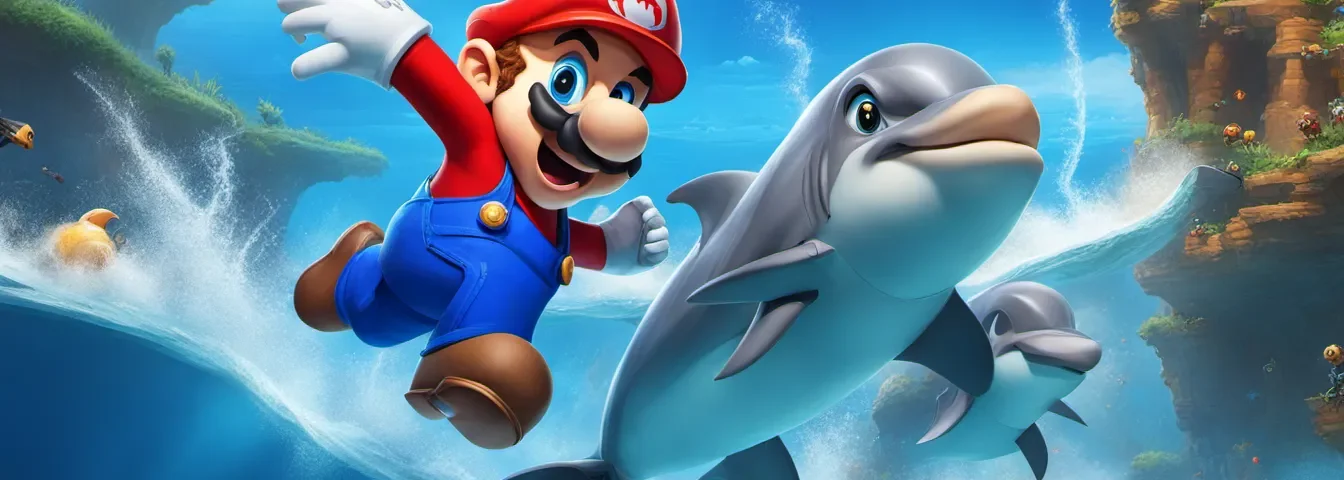We are all familiar with the typical scenario. You’re leaping and exclaiming with joy as you progress through a series of exquisitely crafted platforming levels in the latest installment of the Mario game franchise, when suddenly you spot waves of azure hues approaching, disrupting your rhythm. Yes, my dear friends, it is time for an aquatic stage. However, take solace in the fact that Super Mario Bros. Wonder accomplishes what no other Mario game has been able to achieve: it actually makes water levels enjoyable. Dare I say, even fun! At the very least, they are no longer dreadful. This is the true marvel.
Water levels have always been the laborious trudge in Mario games (and numerous other platformers, for that matter). Your mobility is significantly hindered, causing you to sink to the depths and requiring you to incessantly tap the Jump button to paddle. Meanwhile, the enemies move in erratic swim patterns, rendering them less predictable as your own movements are severely restricted. While Mario and his companions cannot suffocate like certain other retro platforming series, everything else about these levels is notorious for being the most detested aspect of any Mario game. Frankly, it is astonishing that Super Mario Bros. 3 is as remarkable as it is, considering it includes an entire aquatic world (not to be confused with WaterWorld).
However, Mario Wonder ingeniously reimagines the Mario formula in numerous ways. The Wonder effects offer constant surprises, playing while connected allows you to witness player shadows and standees, and badges introduce an equipment system that can be customized to suit your requirements in each stage. It was the badges that prompted the developers of Mario Wonder to reassess the long-maligned water stage archetype and declare: I can rectify this.
This is because the new Dolphin Kick badge enables Mario and his comrades to swim like mermaids or, well, dolphins. They utilize their hind legs to swiftly and smoothly navigate in multiple directions. Imagine Ecco the Dolphin, but within a Mario platforming stage. Suddenly, underwater stages are no longer a sluggish trudge through a series of adversaries who are far more adept at swimming than you are. You get to experience a sense of complete control, effortlessly gliding through the water like the rest of them, and you can even speedrun through a water stage just like a standard one.
Admittedly, Dolphin Kick is primarily useless outside of water stages, which limits its utility considering the scarcity of underwater levels. However, this only serves to highlight the impressive foresight of Nintendo in including it. It further emphasizes the versatility of the badge system in overcoming stage challenges. Water stages merely provide an extremely specific example of its potential.
Of course, you still have the option to navigate water stages in the traditional manner if you so desire. However, you now have constant access to a tool that allows Mario to control himself as if the game were specifically designed to take place underwater. Once you are finished, simply switch back to a land-based badge and continue with your fantastic Mario platforming adventure. Moreover, the enhanced movement capabilities provided by Dolphin Kick enable water stages to feature more ambitious enemy patterns, obstacles, and Wonder effects than if you were still swimming as if the mafia had burdened you with concrete shoes.
Water stages are far from the highlight of Mario Wonder. Overall, they remain relatively unremarkable compared to the assortment of expertly crafted platforming levels and Wonder effects. However, they are no longer actively vexing, allowing the true enjoyment of the game to shine through. This is an accomplishment that no other Mario game has achieved.
